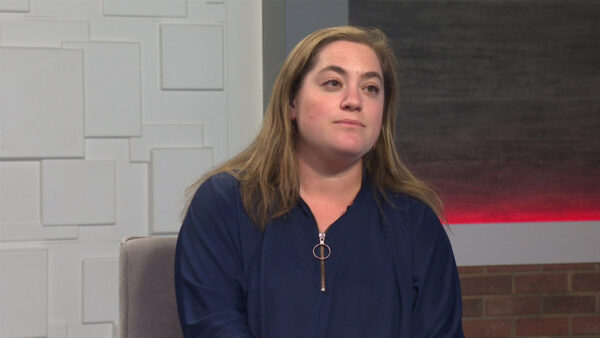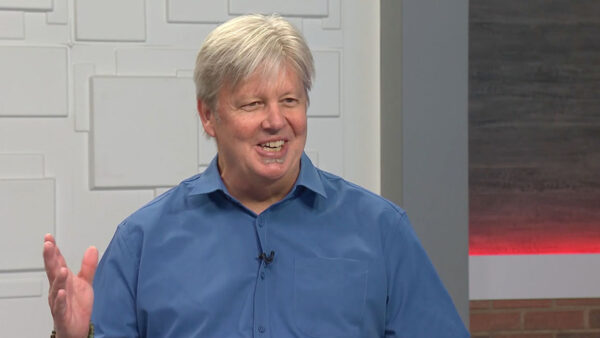The International Water Association Leading Edge Technology Conference was held this week in the Valley to bring together experts from around the world to discuss challenges in finding sustainable water solutions. Paul Westerhoff, Director of ASU’s School of Sustainability Engineering, talks about the conference.
Ted Simons:
The international water association leading edge technology conference is being held this week in the valley. The event brings together experts from around the world to discuss challenges to finding sustainable water solutions. Here to talk about the conference is Paul Westerhoff, the director of the Arizona state university school of sustainable engineering and the built environment. He is a water researcher and one of the organizers of the event. Good to have you here.
Paul Westerhoff:
Thanks, Ted.
Ted Simons:
What are we talking about here?
Paul Westerhoff:
This is the first time this conference has come to the United States at all and we're able to bring it to Arizona and it brings efforts really from around the globe who deal with water. This is the water you use every day in your house, that runs industry, as well as the wastewater we end up treating, using for power plants and golf courses, for example.
Ted Simons:
I would imagine wastewater reuse is a biggy.
Paul Westerhoff:
It is. And one of the reasons we can bring it to Arizona is that we can look at the challenges as well as the opportunities using water throughout its whole cycle.
Ted Simons:
Does Arizona by its nature, being a desert, it was discussed in our last interview, regarding dust and such, make for challenges that would be beneficial for others to learn about.
Paul Westerhoff:
When this organization looked for where to come, we sold Arizona as the water capital of the world but the technology we use here and the experts at the cities and consulting firms around here are leading the world's technology development whether it's for drinking water or reuse.
Ted Simons:
Let's talk about the idea of nutrient recovery from reuse water, what does that mean?
Paul Westerhoff:
Phosphorus, the stuff we use in our lawns is going to run out in somewhere between 50 to 75 years and a lot of it ends up in wastewater and one of the ideas is to recover it from wastewater. Another one is all the carbon, that is the food wastes and other things that go down your sink, actually right now is looked at as waste. You can make energy from wastewater by recovering the energy inside the carbon.
Ted Simons:
The idea of the phosphorus disappearing, first, what happened to it? And secondly, what kind of impact are we talking here?
Paul Westerhoff:
About five to 10 mines in the world where most of the phosphorus comes from. In the United States, two are three are going to be depleted in the next 20 years so, we need to look ahead at the sources of phosphorus. We look at it from agricultural inputs, everything we need to get our food from, but we can think of in the '40s and '50s, there were changes in the nitrogen cycle that provides the greening in the world. A forecast is the lack of phosphorus could cause the browning of the world. It's going into the Gulf of Mexico as it runs off agricultural crops and where we can retain it are the opportunities we're looking at.
Ted Simons:
What technology are we looking at? I know ASU is at the forefront of this stuff.
Paul Westerhoff:
There's a whole spectrum of technologies out there that in the past, phosphorus was looked at as a bad thing to keep out of the water, so you wouldn't have algae growth. But now we're looking at similar technologies to remove the phosphorus and then use it more efficiently. For waste water right now a lot of the phosphorus goes in the removal of the bacteria to purify the water, than is supplied to agricultural crops, but it becomes very expensive to move that amount of material around when you're only interested in one element.
Ted Simons:
I know ASU is also involved in something -- microbial photo energy for renewable energy.
Paul Westerhoff:
Right.
Ted Simons:
What is that all about?
Paul Westerhoff:
This is the use of algae to capture sunlight from the sun and turn it into either lipids, oils or other high-value materials. But in these systems, just like you and I requires nitrogen and phosphorus and one of the tricks is to be able to recover the phosphorus out the system while you produce the oil.
Ted Simons:
This is all technology and kind of high-techy stuff but there's also public policy, getting countries to work together. Food, management, and transportation to work together. That's got to be part of the discussion.
Paul Westerhoff:
This conference brings 50 countries from around the world. China, rapidly growing in terms of technologies for water development and the focus of this conference is really on recovering the carbon and phosphorus, Purifying water with new technologies and I think the new domain to come in here is understanding the public perception of water. Would you want to use reclaimed water. Why not? What would you want it use it for? I think the cutting edge of the leading edge is really this melding of science, technology and public perception.
Ted Simons:
As well as public policy around the globe. Not just with city-to-city, but country-to-country.
Paul Westerhoff:
Right, even though you can move food crops around the world, it becomes difficult to ship water from China to the U.S. Unless you look at new technologies. So one example of this would be hydrogen fuel cells. The amount the electricity you use in your house, you can produce from a hydrogen fuel cell. The byproduct is water. You bought the hydrogen from somewhere and the oxygen is in the air and it recombines and there's water. One of the posters for this conference for example is looking at fuel cells, the amount of energy you use in your house will produce a few gallons of ultra pure water you can drink.
Ted Simons:
The concept of urban wastewater treatment around the world, in general, are we seeing marked improvement or have we hit a plateau?
Paul Westerhoff:
What's really spurred on the advances in the United States and then developing countries is the regulation. So in the 1970s, there was the Clean Water Act to protect the environment from pollution from wastewater. However in the U.S. it is becoming more recognized, whether you're in Philadelphia or other cities that a large fraction of the water in the water supply is actually wastewater. So the regulations that mirror wastewater and drinking water are very disparate. That they need to -- come closer and closer together, so this conference is looking at technologies that are looking at leapfrogging into the next generation. When you go to developed countries, if I make an analogy, you don't want to put in land lines for phones. You want cellphones. We're also looking to leapfrog technology for developing countries and how the new infrastructure in the United States can be built as well.
Ted Simons:
And the attendees of the conference will be able to look at what ASU is doing as well. What will they be seeing?
Paul Westerhoff:
Today we had a tour of international people looking at the Arizona biodesign center and environmental research labs where they're doing cutting edge technology, identifying the challenges in our water and the technological solutions that are out there to solve the problems for the future.
Ted Simons:
Fascinating stuff. Thanks for joining us. We appreciate it.
Paul Westerhoff:
Thank you.
Paul Westerhoff:Director, ASU's School of Sustainability Engineering;























